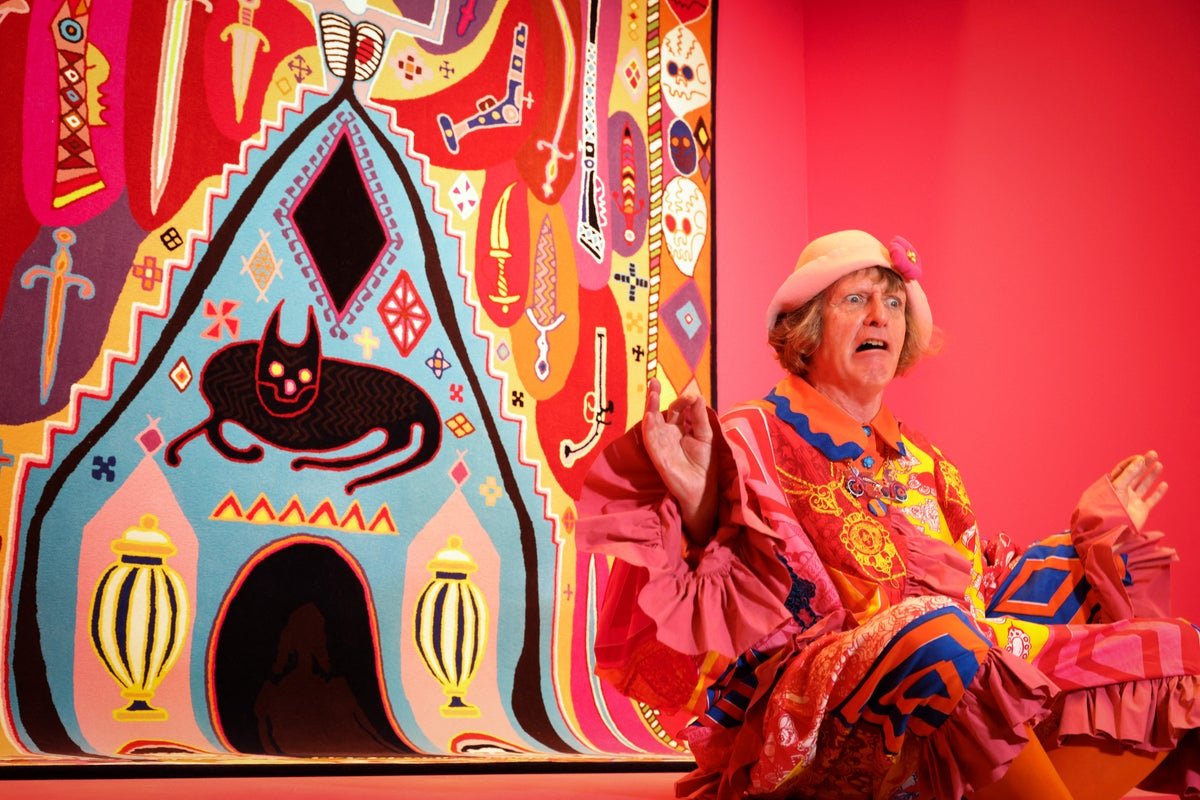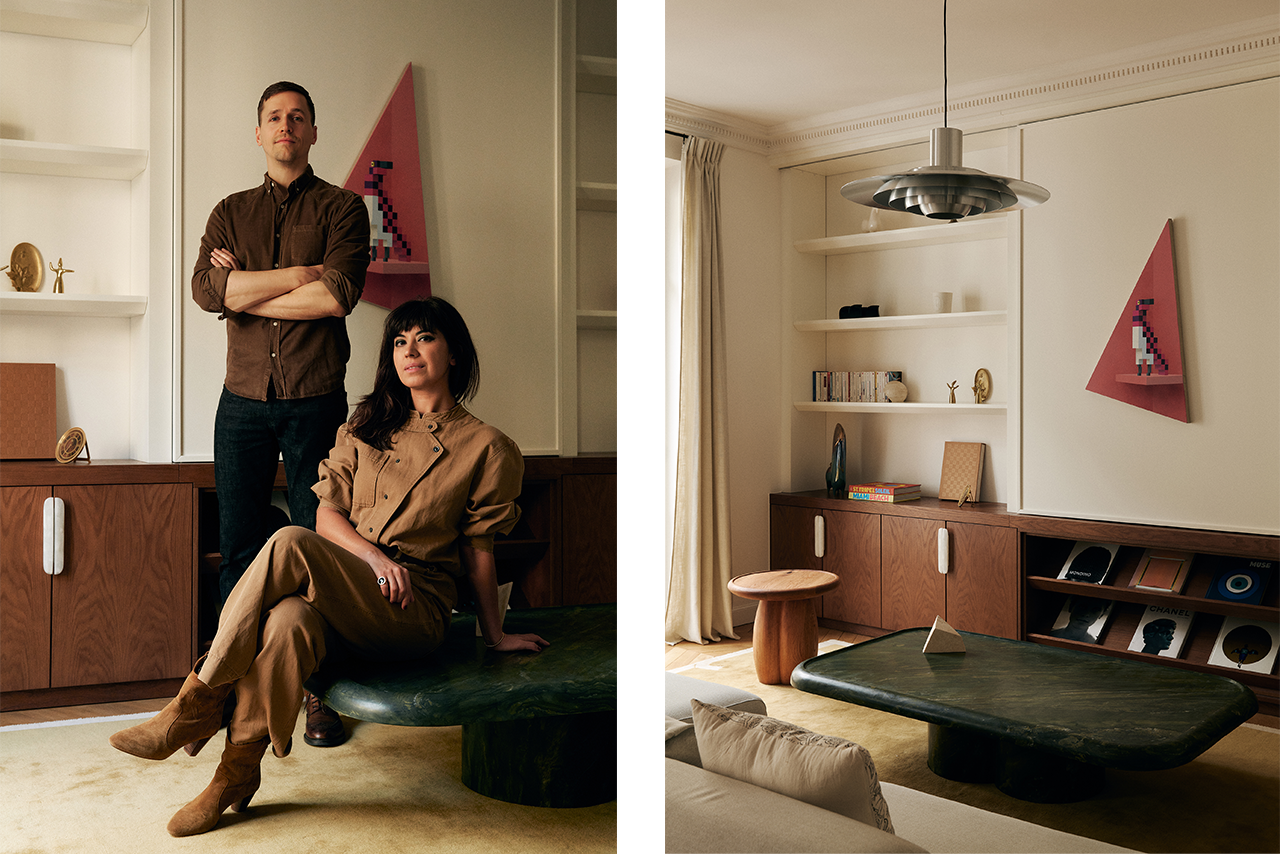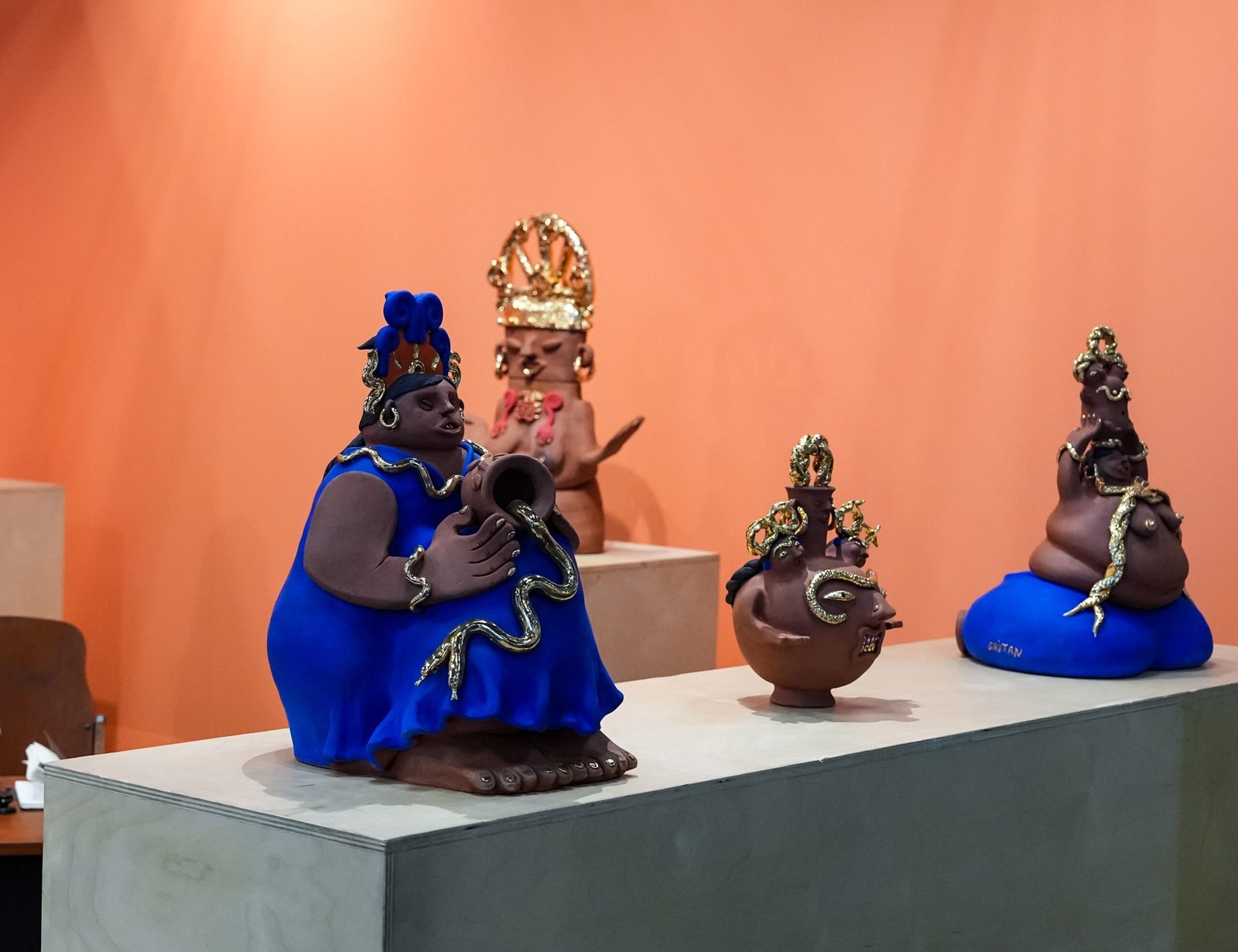A curious figure haunts the Wallace Collection’s largest contemporary art exhibition to date: Shirley Smith, an eccentric spinster who was regularly seen in these galleries in the late 1960s, brandishing a drawing pad and pens, and claiming to be the illegitimate great-great-granddaughter of the gallery’s founder Sir Richard Wallace.
Drawings and textile pieces purported to be by Smith appear alongside 40 new works by Sir Grayson Perry in the new exhibition Delusions of Grandeur, in which everyone’s favourite emotionally empowered Essex man sets out to “interrogate the very nature of craft-making and our drive for perfectionism”. This isn’t the first time Perry has pitted so-called “outsider art” – produced by untutored, often severely challenged people on the margins of society – against the most exalted high culture, in this instance, the Wallace’s spectacular holdings of 18th century Rococo art and design. And it’s certainly not the first time he’s riffed on the themes of authenticity and artifice, establishment art and street imagery. From Hogarth-inspired tapestries to a British Museum exhibition invaded by Perry’s childhood teddy bear Alan Measles on a motorbike, these preoccupations have helped make the 65-year-old one of Britain’s most popular artists.
Anyone, indeed, who is even slightly familiar with Perry’s work, will be figuring Shirley Smith as one of his fictional alter-egos alongside Measles and Claire, his “little girl” transvestite persona. Yet the “archival documents” presented to tell Smith’s story, including letters and a grubby newspaper cutting, are so expertly faked, I was momentarily befuddled – the fact that Smith is announced from the outset as a “fictional persona” notwithstanding. So, it was reassuring to note that the heavy-set features beneath the dark wig in the “vintage” photo of Smith filling the end of the first gallery are clearly Perry’s. We like our national treasures to act true to form: that’s what makes them national treasures.
Since visiting the Wallace Collection as a teenager, Perry has been fascinated by what he sees as the gallery’s opposition of male and female aspects, the former typified by its large and sometimes terrifying collection of arms and armour, the latter by the frilly opulence of its great Rococo works – with masterpieces by Watteau and Fragonard beside wildly ornate furniture.
A densely engraved steel helmet with alarmingly humanoid features could pass for the kind of thing German armourers were turning out in the early 16th century, until you notice the brass figure of Claire mounted on its forehead with the words “Cry Baby” and “Mummy’s Boy” etched alongside. In one of the lengthy texts that accompany each exhibit – all very much in Perry’s voice – he links his early interest in such objects to his adolescent fascination with BDSM roleplay scenarios.
From here on, the show’s interest lies not so much in picking apart what’s original and what’s by Perry (for the most part blindingly obvious), but which works he’s offering as himself, and which he’s using to “impersonate” Smith.
A tapestry, apparently attributed to Perry, showing an 18th-century portrait of a woman surrounded by the logos of charities supported by wealthy benefactors in need of moral validation isn’t the subtlest comment on the links between art, patronage and dodgy capitalism, yet the sheer intensity of the swirling hallucinogenic colour and the intricate layering of the woven imagery make you chuckle with respect at the mad hubris of the enterprise. Another tapestry purportedly by Smith, Fascist Swing, is a wildly over-the-top, acid-tinged take on Fragonard’s The Swing – probably the most popular work in the Wallace Collection. This one has the word “fascist” crudely woven into it, in protest against the rejection of Smith’s claims on the place. It wildly overstretches the Smith “hoax” because it’s so utterly unlike anything you can imagine an isolated elderly woman being able to produce. By this stage in the exhibition, I don’t suppose even the most gullible visitor will still be swallowing its core conceit. Yet as a piece of wildly inventive textile art, the piece is hilarious in its own right.
We don’t tend to think of handicrafts and humour naturally fitting together, but Perry has made that his stock in trade, a fact borne out in a selection of new pots. The ornately glazed sides of one vessel feature a meeting of Perry’s various personae, including Claire and Alan Measles, with Smith’s alter ego Millicent Wallace, a fictional member of the Collection’s founding family, watching an earlier incarnation of Smith living rough on London’s streets.
-Grayson-Perry-Courtesy-the-artist-and-Victoria-Miro.jpg)
I was more amused by Man of Stories, a bonkers re-imagining of an anonymous 18th-century bronze figure of a guitar-strumming minstrel, seen as a sort of faux-Latin American votive figure, playing a bass guitar, and sporting a cloak covered in contemporary badges, including ones reading “F*** the Tories“ and “Brex Shit”. Great popular entertainer that he is, Perry doesn’t inhibit himself by pandering to his audience’s sense of their own sophistication.
A Selection of Drawings by Shirley Smith attractively pastiche two of the best-known outsider artists Madge Gill and Aloise Corbaz, whose densely patterned works are seen in the first room. Perry pretends to be Smith, creating fantasy images of her imagined aristocratic childhood. But to have truly carried it off, he would have had to have worked a lot harder trying to summon a touch of those earlier artists’ visionary intensity.

In the final room, a notional mock-up of Smith’s bedroom, the supposed interplay of Smith and her creator falls apart. A large, boldly patterned carpet – a “prayer rug for the security of home and the Wallace collection” – looks like a parody of Perry at his clunkiest and most cartoonish.
Yet even here there are delightfully clever touches. François Boucher’s iconic 18th-century portrait of that Rococo “influencer” Madame de Pompadour, with which both Perry and supposedly Smith have been obsessed, is represented both by the original painting and a sort of “therapy” version constructed from strands of wool and random plastic objects.
Perry is a unique figure in that the salient question after seeing one of his exhibitions isn’t so much “was it great, or even good art?” but “did you laugh?” In this instance, I did quite a lot. But the whole thing might have been much funnier if Perry had stuck to his guns in maintaining the Smith guise. No one would have been convinced for a moment, but trying to keep that mask in place could have yielded a lot of great comedy.
‘Grayson Perry: Delusions of Grandeur’ is at the Wallace Collection from 28 March until 26 October







